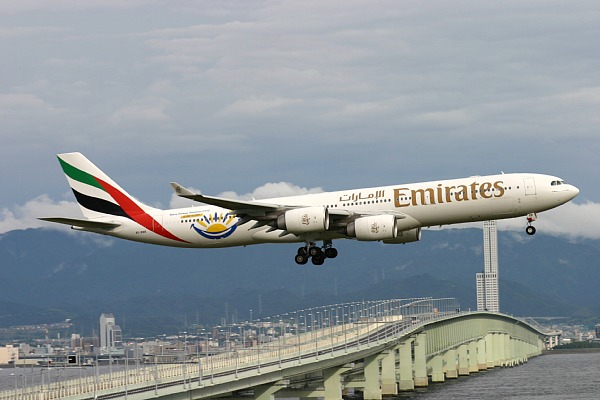Emirates A340-500 came centimeters from crashing on takeoff from Melbourne, Australia over the weekend:
 The plane -- carrying up to 215,000 liters of highly flammable aviation fuel -- was less than 70 cm off the ground when it crashed through lights almost 200 m from the end of the runway.
The plane -- carrying up to 215,000 liters of highly flammable aviation fuel -- was less than 70 cm off the ground when it crashed through lights almost 200 m from the end of the runway.
...The fully-laden Airbus A340-500 was believed to have been travelling about 280 km/h when it reached the end of the runway without becoming airborne.
At the last minute, the two pilots "rotated" the plane [too steeply] causing its tail to crash into the end of the runway.
Damage to the $220 million plane is so severe that the airline is considering writing it off rather than repairing it.
... Aviation officials said ... Emirates' pilot training and competency standards are almost identical to those in Australia....
I corrected the penultimate paragraph because the reporter seems to believe that "rotating" is an emergency procedure that involves yanking the yoke back hard enough to bounce the tail off the runway. Actually "rotating" just means rotating the airplane on its horizontal axis so the nose points up. Rotating a Cessna 172, for example, is such a subtle maneuver at takeoff speed that non-pilot passengers often wonder how the plane got airborne. What the Emirates pilots did was to pull back so hard that they caused a tail strike. In other words, they panicked, which compounded the problem because the plane's angle of attack seems to have been too steep to generate sufficient lift to take off.
As you pull back on the yoke, the tail of the aircraft is pushed down, which pushes the nose up. This translates speed into lift. It also increases drag, which means pulling back too far slows the plane too much which causes lift to drop. In an airplane the size of a Cessna 172, this can cause a takeoff stall; with an Airbus 340, the plane is so long that the tail scrapes the runway long before the plane stalls. That causes a different kind of drag, of course, and now you're "in the world of physics" as pilots say and no longer flying.
I hope to read follow-up about this when it's available; in particular, I'm wondering what went on in the cockpit at takeoff.
Note that the photo is not of the accident airplane.